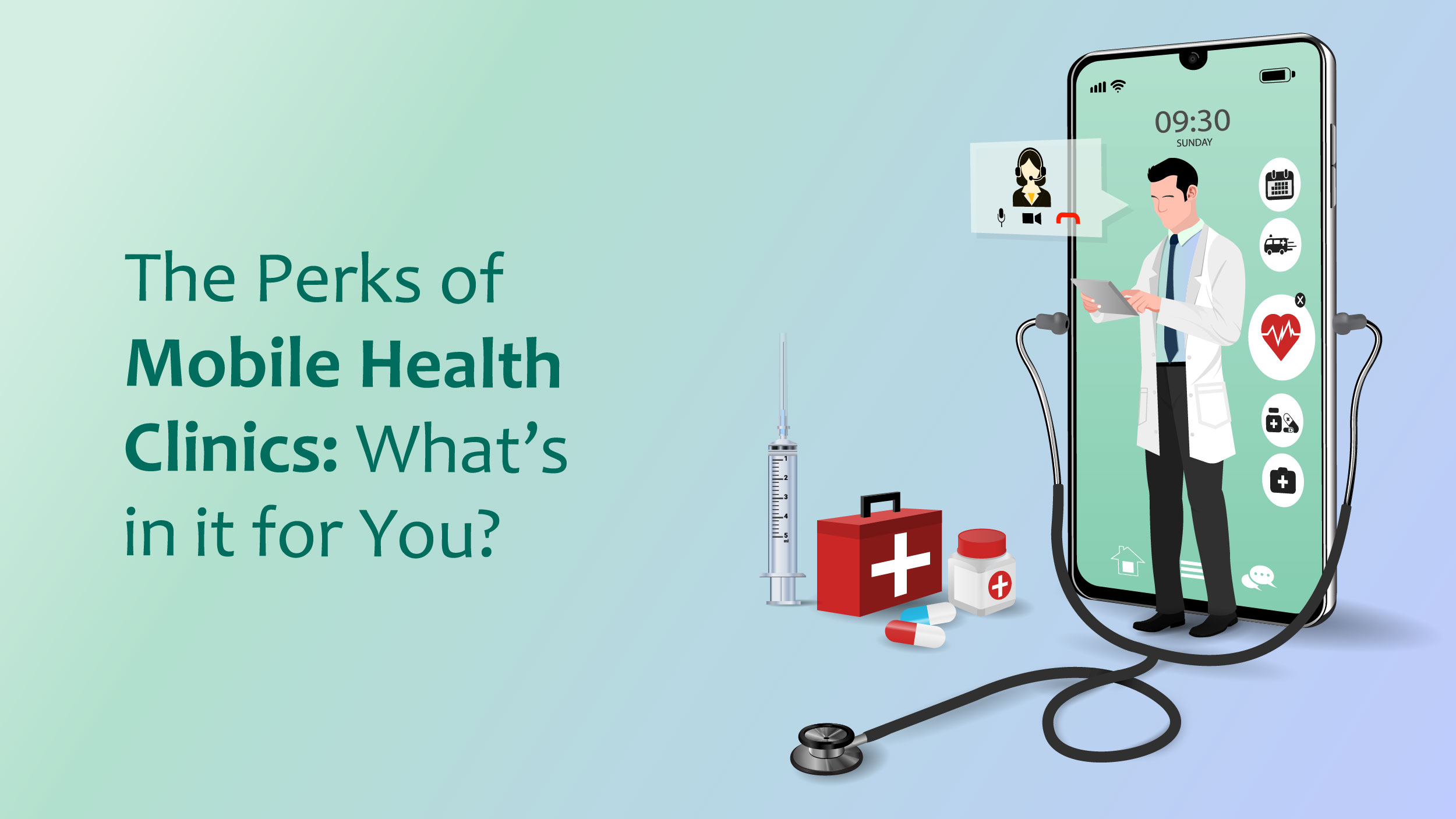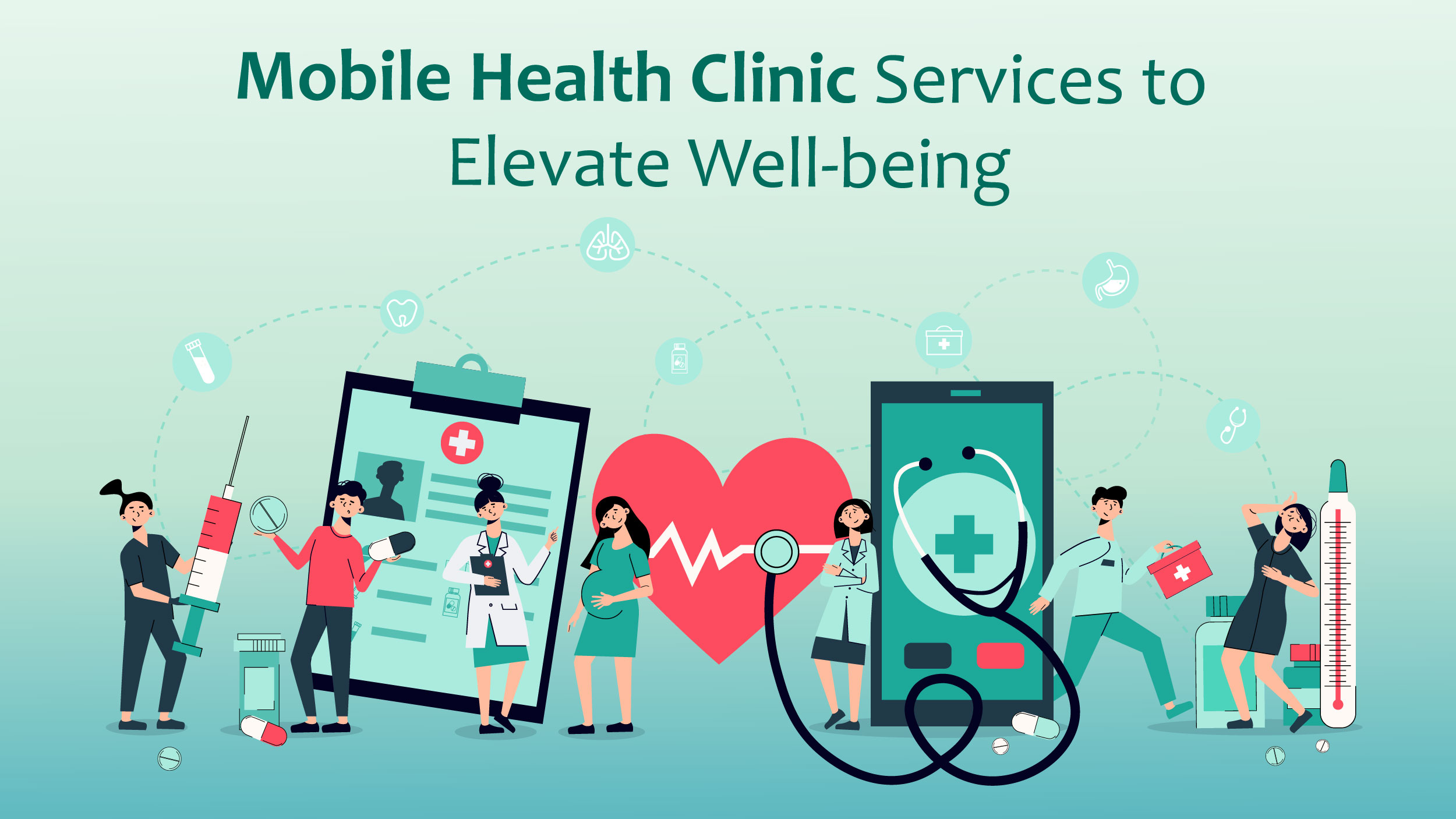Have you ever wondered how access to healthcare can be made easier and more convenient? Imagine a world where, instead of being restricted to the walls of a traditional clinic, medical care comes to you, right at your doorstep. Mobile health clinics (mHealth clinics) are making this a reality. These innovative vehicles are transforming the way healthcare is delivered, bringing medical services directly to communities in need.
These clinics serve as the sole source of critical medical care for certain individuals. For numerous people, the availability of economical healthcare hinges on the existence of these mobile clinics.
But what constitutes a mHealth clinic? What range of services do they offer? Read on to find the answers to these questions, along with instances from real-life scenarios where these clinics successfully bridged the gap in medical care accessibility.
Decoding Mobile Health Clinics
mHealth clinics have become a game-changer in recent years, completely revolutionizing medical care delivery. These cutting-edge healthcare platforms address the access gaps for underprivileged and vulnerable groups to healthcare by bringing medical services directly to communities.
These clinics can deliver urgently required medical care to overlooked populations. They can function independently or as extensions of current healthcare organizations and come in a variety of shapes and sizes, including medical vans, buses, RVs, and trailers. Varied services, such as urgent care, primary care, and preventative healthcare, are offered to those who might not otherwise receive care from these clinics.
The Perks of Mobile Health Clinics: What’s in it for You?

mHealth clinics play a pivotal role in enhancing the accessibility and affordability of healthcare within communities, thereby leading to improved patient outcomes.
Several notable advantages of these services are outlined below:
1. Cutting Costs for Both Patients and Providers
In comparison to more conventional healthcare delivery methods, mobile health clinics offer high-quality service at a lower cost.
As per the Impact Report from Mobile Health Map, the primary focus of mobile medical clinics is directed towards populations that include uninsured, low-income individuals, those residing in rural areas, the homeless, and veterans. Mobile Health Map reports that each $1 invested in mobile health generates $12 in savings, yielding an impressive return on investment of 12:1. Portable health clinics assist patients in avoiding expensive ER visits during emergencies, saving them money.
2. Enhanced Reachability
Because of the nature of these clinics, medical professionals can customize their services for particular areas. For isolated and vulnerable communities as well as recently displaced populations, traveling health centers provide adaptable, responsive care. Mobile clinics’ flexibility enables specialists to adapt their care to a population’s changing medical requirements.
A survey of 291 mobile health clinics revealed that 56% of them expressly target uninsured patients, 55% aim to serve low-income patients, 38% target the homeless, and 36% target people in rural areas.
Access to healthcare in rural areas is improved with the help of portable health clinics. When organizing a crisis response, the World Health Organization (WHO) employs mobile healthcare teams that can travel by bike, boat, vehicle, or even on foot.
3. All-inclusive Care On-Site
Modern medical technology is used in mobile health clinics, which also have a skilled staff of medical personnel. To provide top-notch care, these clinics have nurse practitioners, doctors, and other medical professionals on board. Mobile clinics provide all-inclusive care at the patient’s door, ensuring convenience and continuity of care. This includes routine check-ups as well as specialized treatments.
4. On-time and Immediate Assistance
The rapid and immediate delivery of care to people who need it most is made possible by these clinics that provide healthcare on wheels. Mobile clinics offer on-the-spot care for a variety of diseases, lowering the risk of treatment being delayed by eliminating the requirement for longer appointment wait times.
Mobile Health Clinic Services to Elevate Well-being

Incorporating telemedicine, rural health initiatives, and medical vans, mHealth clinics bridge care gaps, offering vital services to underserved populations.
Mobile clinics extend a broad spectrum of healthcare services, which encompasses:
- Primary care
- Urgent care
- Preventive health screenings
- Behavioral health services
- Chronic disease management
- Dental care
- Pediatric care
- Prenatal care
For underprivileged groups, mHealth clinics can be the first line of defense against illness. About 47% of mobile clinics provide preventive screenings, and 41% provide primary care, according to a longitudinal study of these clinics that was published in the International Journal for Equity in Health. The gap between community health demands and conventional care delivery methods can be filled by these crucial services.
Glimpses of Mobile Health Clinics Victories!
When it comes to providing healthcare services to underprivileged populations, remote care units have shown to be game-changers. By bringing medical treatment to people who need it most, these clinics have revolutionized the way healthcare is offered. Given below are some success tales that demonstrate the value of mHealth clinics:
- The mobile health clinic program in San Mateo County delivers preventative health checks to vulnerable people, ensuring the early identification of health conditions.
The clinic’s staff offers thorough health evaluations, such as immunizations, chronic disease screenings, and wellness exams, with the help of a specially designed recreational vehicle.
- In Minnesota’s rural communities, the Mayo Clinic Health System has established a mHealth clinic. Reaching patients who don’t have access to transportation or live in distant areas is the goal of this campaign.
Traveling to various areas, nurse practitioners and an on-site team offer primary healthcare services such as regular check-ups, chronic illness management, and health education.
- A fleet of mobile medical facilities run by Prisma Health in South Carolina is equipped with modern technology.
When used in locations with insufficient access to urgent care, these mobile devices act as miniature emergency rooms. By providing prompt medical assistance, they have evolved into lifesavers in emergency situations.
- In Urbana, Illinois, the Carle Mobile Health Clinic specializes in serving children.
This mobile clinic’s pediatric specialists provide preventive tests, immunizations, and specialized treatment for ailments like allergies and asthma. It guarantees that children obtain essential medical care without having to travel or wait a long period.
What Lies Ahead for Mobile Health Clinics?
Although mobile clinics have already made great progress in transforming healthcare, the future holds even more promising opportunities. mHealth clinics play a crucial role in advancing rural health, ensuring that even remote communities have access to essential medical services and preventive care. The scope and impact of mobile clinics are expected to increase as a result of innovations and developments in healthcare delivery models, collaborations, and technology.
Through the incorporation of new technologies, such as tele medicine for remote care and wearables for real-time monitoring, mobile health clinics are changing. Accessibility is improved by collaborations with regional organizations. Improved patient care coordination is envisaged with the integration of mHealth clinics into larger healthcare systems.
Overall, the significance of health and wellness on-the-go is undeniable, whether it’s delivering healthcare to underserved rural regions or offering aid during emergencies and crises.


